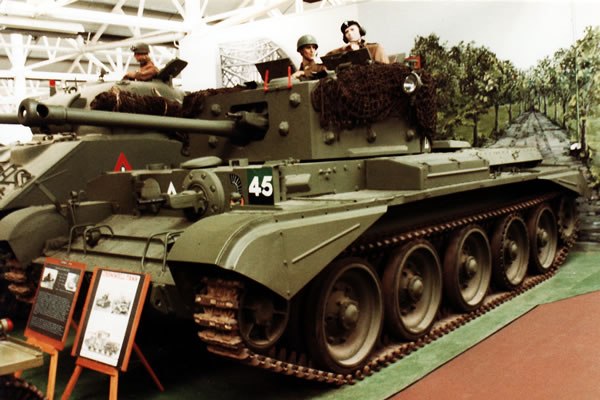The Cromwell tank, named after the English Civil War leader Oliver Cromwell, was the first tank in the British arsenal to combine a dual-purpose gun, high speed from the powerful and reliable Meteor engine, and reasonable armour, all in one balanced package. Its design formed the basis of the Comet tank. The Cromwell first saw action in June 1944, with the reconnaissance regiments of the Royal Armoured Corps.
This Cromwell tank was on display at the Tank Museum at Bovington when I went there in 2016.
I had taken a photograph of the same tank twenty odd years earlier as well.
The Cromwell tank was one of the most successful series of cruiser tanks fielded by Britain in the Second World War. Its design formed the basis of the Comet tank. However by the time the Cromwell first saw action in Normandy in many ways it was already out of date.
I am the process of painting some Cromwells for Flames of War.
I remember when I watched episode 4 of Band of Brothers and was pleasantly surprised to see some (real) Cromwells used in the filming.
Overall the Cromwell was a welcome addition to the British forces, but as with many allied tanks, they were under armoured and under-gunned when faced with the German tanks of the same time period. Where the allies won out was in sheer numbers and probably more importantly logistics.









































